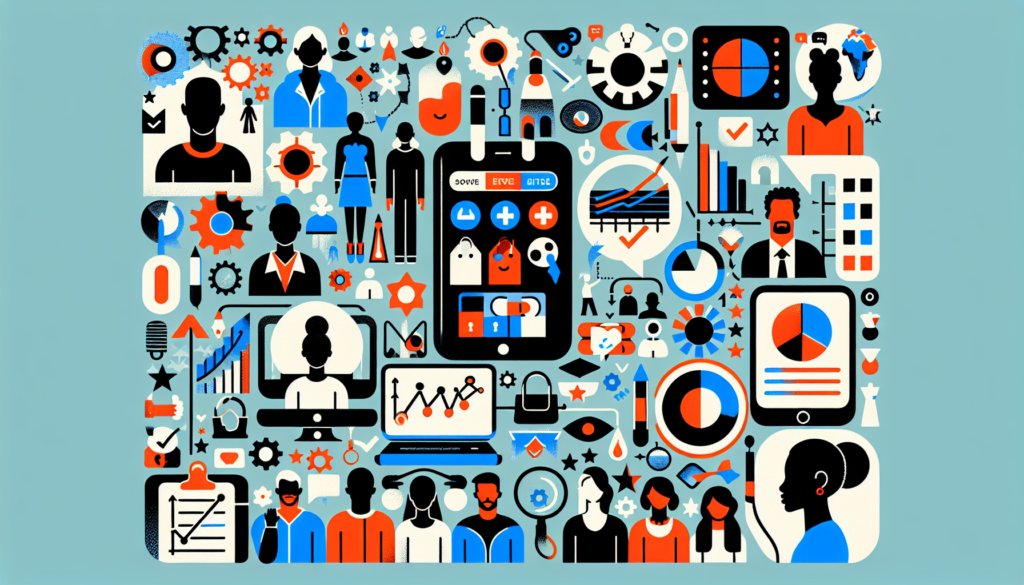In the digital age, user experience (UX) emerges as a crucial factor for the success of technology products and services. The thorough and systematic evaluation of UX is a field that integrates various disciplines – from interactive design to cognitive psychology – to provide concrete analysis and improve the interaction between the user and the product. This article will provide a detailed overview of the advanced tools and techniques used to assess user experience, emphasizing recent advances and practical applications in the industry.
UX Evaluation Techniques
Heuristic Analysis
It is a systematic review of usability guided by a set of previously established criteria, usually based on Jakob Nielsen’s heuristics. UX professionals apply these rules to identify usability problems that could affect the user experience.
Usability Testing
Usability testing involves observing how real users interact with the product or service. These sessions are monitored to detect where users encounter difficulties or experience frustrations, providing direct insights into actual usability compared to that envisioned by the designers.
Heat Maps and Session Recordings
Tools such as Hotjar or Crazy Egg offer graphical visualizations of user behavior, such as heat maps, session recordings, and conversion funnels. These advanced technologies provide an immediate overview of the areas that capture the most attention and those that generate confusion or abandonment.
Task Analysis
By breaking down and studying each step a user must take to complete a specific task, designers can identify friction points and improve the flow of interaction. This technique is useful for optimizing the efficiency and effectiveness of the user flow.
UX Surveys and Questionnaires
Quantitative methods, such as the System Usability Scale (SUS) or the Net Promoter Score (NPS), allow for the collection of user ratings in a standardized manner to obtain comparable and trackable metrics over time.
Advanced Analysis Tools
Eye Tracking
Eye-tracking technology provides precise data on where and how users look while interacting with the interface. This allows for adjusting the visual layout to align with natural patterns of attention and improve the hierarchy of information.
Electroencephalograms (EEG) and Biometric Response Measurement
These methods allow for a deep reading of users’ physiological and emotional reactions to certain stimuli. By measuring responses such as brain activity, heart rate, and skin conductance, indicators of emotional engagement and stress levels experienced by the user are obtained.
Sentiment Analysis
Using techniques of Natural Language Processing (NLP) and artificial intelligence, it is possible to analyze large volumes of user feedback from social media, forums, or online reviews, to identify sentiment patterns and obtain a large-scale assessment of the UX.
A/B Testing and Multivariate Testing
With these techniques, designers can compare the effectiveness of different versions of a page or interface element by presenting them to segments of the audience and measuring which one produces better performance in terms of specific metrics such as conversions or time spent on the page.
Case Studies
The application of these tools and techniques becomes fully meaningful when associated with real case studies. For example, through eye tracking and heat maps, Netflix has optimized the arrangement of its content to ensure intuitive navigation and efficient selection. Similarly, companies like Amazon apply A/B testing continuously to refine the shopping experience and increase conversion rates.
In a specific case, Microsoft used usability testing to redesign its Office suite, resulting in a more intuitive interface that reduced the time needed for users to complete common tasks. This methodology of test and continuous improvement represents the evolution of UX towards practices based on scientific evidence and empirical data.
Future Directions and Potential Innovations
With the increasing incorporation of artificial intelligence and machine learning, the field of UX evaluation is at the forefront of significant innovations. An increase in UX personalization based on user behavior prediction and dynamic interface adaptation is anticipated. Moreover, advances in virtual reality (VR) and augmented reality (AR) open new horizons for immersion and behavior studies in three-dimensional digital environments.
The realm of UX is vital and dynamic, constantly evolving as technology progresses and user expectations change. In this landscape, the tools and techniques to evaluate user experience must be equally fluid and adaptable, ensuring that products and services not only meet current needs but also anticipate and shape future experiences.

